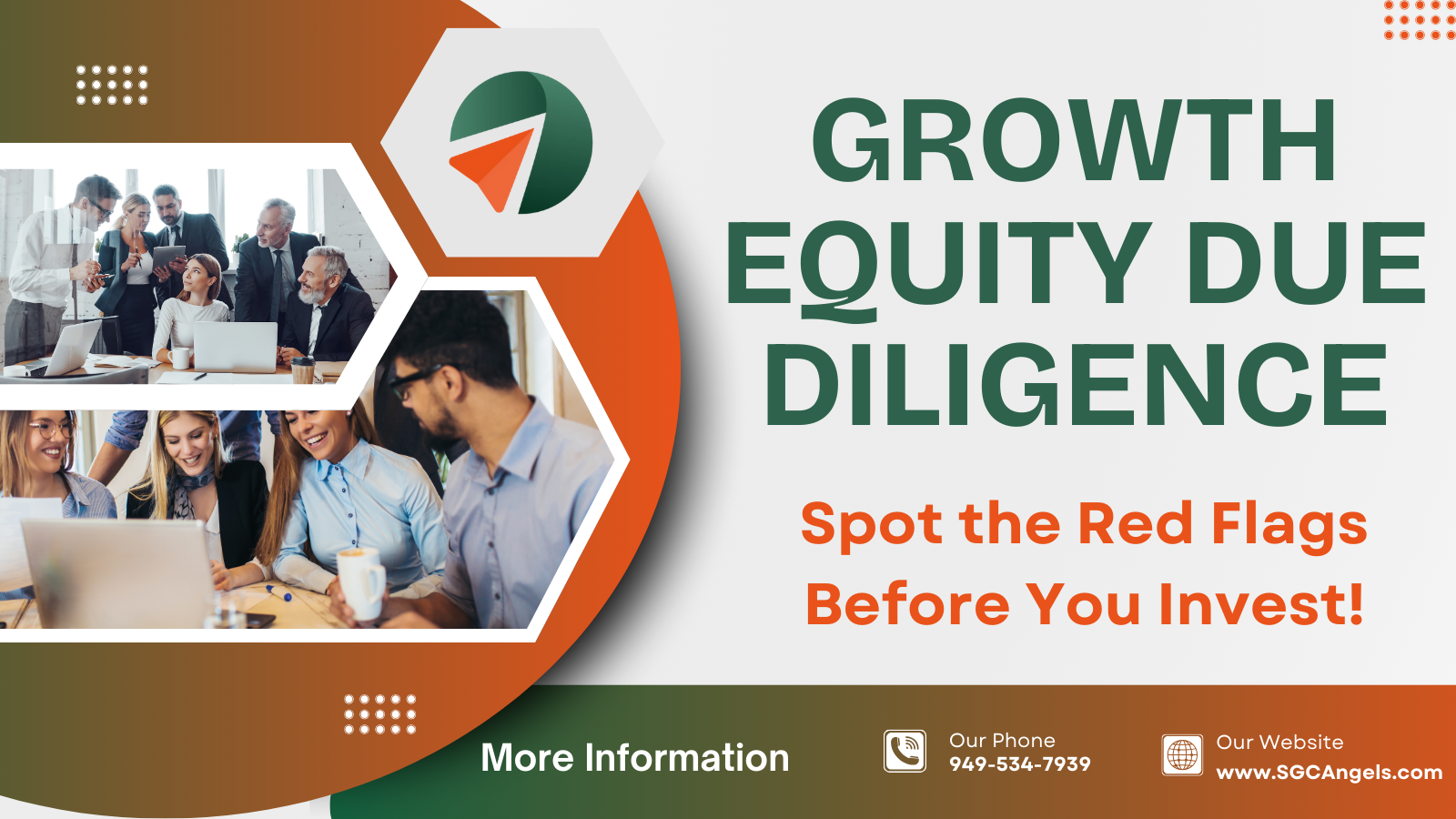Growth equity investments tend to find a middle ground between venture capital’s high-stakes, high-risk gambles and private equity’s attention to established companies. What investors want are firms that have demonstrated product-market fit, have scalable business models, and exhibit high-growth prospects. Yet even the hottest startups contain hidden perils. That is where due diligence pays off—not only to confirm opportunities but to detect red flags that might sabotage growth or destroy returns.
In this article, we’ll dive into the most common red flags investors identify during growth equity due diligence and why founders should pay attention before they hit the negotiation table.
1. Overly Optimistic Revenue Projections
One of the earliest signs of trouble is unrealistic revenue projections. It is predictable to see high growth rates in projections, but when there’s evidence of “hockey-stick” curves with no evidence behind it means:
- Little discipline in financial modeling
- Too much emphasis on a hypothesis instead of established customer acquisition strategies
- More motivation to impress investors and less motivation to show them simple numbers
A report by Foley & Lardner LLP interpreted PitchBook’s H1 2025 VC Tech Survey and noted that 34% of investors said they are scrutinizing deals more closely as part of their adapting approach to dealmaking. Startups need to balance optimism with realistic projections by giving several scenarios (best case, base case, worst case) supported by metrics such as churn rate, CAC (customer acquisition cost), and LTV (lifetime value).
2. Poor Unit Economics
Growth in revenue is of little value if the economics underlying isn’t sound. Investors study trends in such key metrics as:
- Gross margins
- Customer acquisition costs
- Contribution margins
- Payback period on marketing expenses
A caution sign arises when customer acquisition expenses increase more rapidly than customer value or when profitability is based on ongoing fundraising. If a business is growing unprofitably with no clear roadmap to positive cash flow, growth equity investors jump in tight.
3. Customer Concentration Risk
Where one or two clients account for over 30% of total revenues, it indicates heavy reliance. Losing a single deal can ruin the company’s financial health.
It is especially dangerous in areas like SaaS, logistics, and health services, where enterprise agreements can be revenue dominating. Investors ask during diligence:
- How diversified is the customer base?
- Are there long-term contracts?
- What is the client retention rate across segments?
Founders must demonstrate diversification efforts and mechanisms to diversify away from over-reliance on a single client.
4. Operational Bottlenecks
Systemic capacity to manage high growth is essential to scaling. Red flags in this area include:
• Over-reliance on manual processes
• No or limited finance, HR, or customer support automation
• Any issues with the supply chain
Investors recognize that every operational deficiency may lead to flat growth or expensive restructuring later. For instance, if a firm triples its base of customers but hasn’t invested in onboarding technology, churn and disappointment are certain.
5. Leadership Gaps and Turnover
Good leadership is usually the clincher in a growth equity investment. Excessive executive turnover, particularly in sales, finance, or product, is a signal that something is amiss. Investors also highlight cases where founders are unwilling to let go or do not bring in experienced leaders to professionalize the business.
This is what makes cultural fit, succession planning, and management capabilities still top diligence priorities.
6. Compliance or Regulatory Issues
In industries that are regulated such as healthcare, fintech, and education compliance events are always a deal-breaker. Whenever you see investors seeking:
- Pending lawsuits or outstanding claims
- Breach of data privacy laws (and especially GDPR or HIPAA)
- Lack of licenses or certification or if licenses or certifications have expired
An investor can lose faith if there is evidence of compliance issues, ongoing violations, or any activity in the compliance grey area. Regulatory issues are compounded when the companies are scaling up and expanding into new geographies.
7. Reporting Inconsistencies and Lack of Consistency in Metrics
If founders are changing KPIs or using different definitions, then this will raise investor’s eyebrows. For example:
- Changing how “active users” defined quarter to quarter
- Reporting ARR (annual recurring revenue) without distinguishing contracted and expected contracts
- Lack of any cohort analysis
Anything that would suggest poor bookkeeping or some kind of attempt to cover up flaws. Either is a cause for significant alarm.
8. Culture and Governance Problems
Culture is not a buzzword. Bad governance, poisonous workplace culture, or absence of diversity at the top can all contribute to long-term scalability issues. Investors increasingly view governance as part of risk avoidance.
In 2024, funds driven by ESG and growth equity companies weighed more heavily on diversity and sustainability practices, rather than profitability alone. A company unwilling to embrace clear governance structures typically falters during the diligence process.
9. Dependence on Outside Capital
Last but not least, growth equity investors are cautious about companies too dependent on outside capital for survival. A red flag appears when a company:
- Continually burns through more cash than it makes
- Has no path to profitability
- Needs constant bridge rounds to remain viable
This indicates that growth is not self-sustaining and may result in dilution or valuation issues down the road.
Final Thoughts
Growth equity due diligence doesn’t have to be adversarial—its purpose is to uncover risks before scaling capital floods in. Preparation is the secret to founders. Resolving these red flags up front not only builds investor trust but also solidifies the business foundation for long-term success.
For investors, discovering red flags is not so much a matter of saying “no” as it is an opportunity to invest in firms aware of their shortcomings and willing to correct them.
Growth equity is about funding expansion, but thorough due diligence is what helps the expansion be sustainable—and not a gamble waiting to go wrong.






